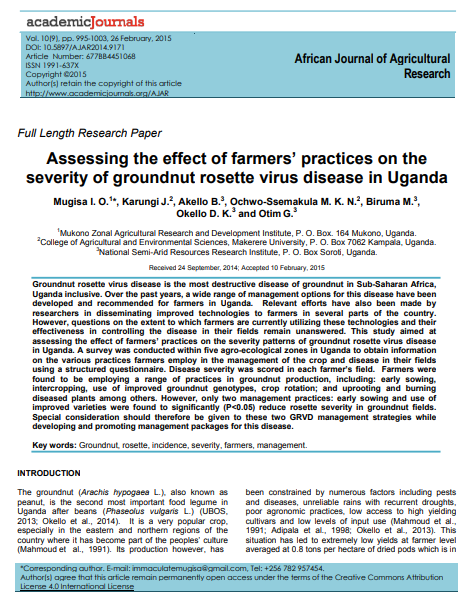Assessing the effect of the farmers’ practices on the severity of groundnut rosette virus disease in Uganda
Summary
Groundnut rosette virus disease (GRVD) is the most destructive disease of groundnut in sub-Saharan Africa, including in Uganda. In recent years, a wide range of management options for this disease have been developed and recommended for farmers in Uganda. Relevant efforts have also been made by researchers in disseminating improved technologies to farmers in several parts of the country. However, questions on the extent to which farmers are currently utilizing these technologies and their effectiveness in controlling the disease in their fields remain unanswered. This study assessed the effect of farmers’ practices on the severity patterns of GRVD in Uganda. A survey was conducted within five agro-ecological zones in Uganda to obtain information on the various practices farmers employ in the management of the crop and disease in their fields using a structured questionnaire. Disease severity was scored in each farmer’s field. Farmers were found to be employing a range of practices in groundnut production, including early sowing, intercropping, use of improved groundnut genotypes, crop rotation, and uprooting and burning diseased plants. However, only two management practices – early sowing and the use of improved varieties – were found to significantly (P<0.05) reduce rosette severity in groundnut fields. Special consideration should therefore be given to these two GRVD management strategies while developing and promoting management packages for this disease.
Open resource Download resource Access resource on external site

